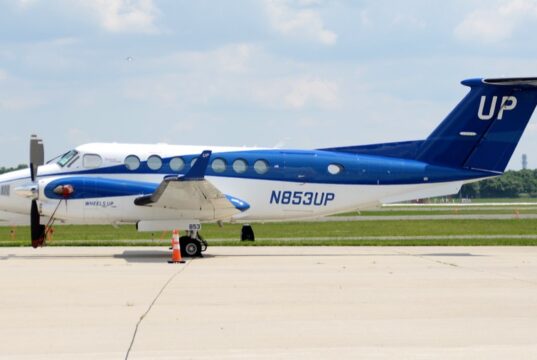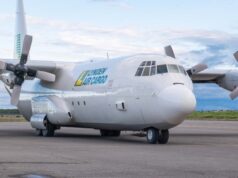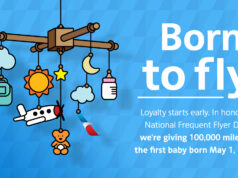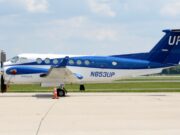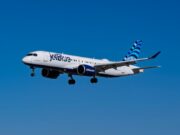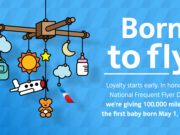
On any given day, hundreds of small planes take to the skies in the name of charitable aviation. You may have heard the call sign NGF and wondered why those pilots often get priority. They are the angels with sheet metal wings.
Russel Steingold is one of them. As a child growing up in South Africa, Steingold dreamed of being a pilot. It only took him 54 years. He earned his license in 2018 and that September signed up to volunteer for Angel Flight West (AFW). He had heard other pilots talking about AFW on the field at Santa Monica Airport (SMO).
“I wanted to do something useful with my flying, not just to fly aimlessly for no reason,” he says. By the following June, he’d racked up 500 hours and completed his AFW orientation. A few days later, he was flying his first mission. “It was fantastic,” he says. “I was very excited about it. It was so gratifying. I picked up a wounded vet from Ontario and flew him up to Visalia,” recalls Steingold, who served in the Israeli Army. “He started off quiet, but slowly warmed up. I also have a military background, so we had quite a bit to talk about.” His passenger was on his way to a therapeutic and recreational camp operated by the VFW. Within a week, Steingold had flown two more missions, another veteran and a young burn survivor on her way to Champ Camp. “Angel Flight West is a really great organization,” he says. “I hope to contribute more in the future.”
Steingold flies a Cirrus SR22 and recently purchased a Beechcraft Baron. On the ground, he runs a successful fashion company. “It affords me to be able to fly,” he says, adding with a smile, “Will work for fuel.”
“What these men and women do is just incredible and inspiring,” says AFW Executive Director Josh Olson. “These pilots are volunteering their time, talent, and all the costs to help people in need. There are no costs to the passengers. We have two volunteers who have flown over 1,000 missions. But even if a pilot flies only one mission, they’ve made a difference in someone’s life.”
When Olson joined the organization in 2003, first as a volunteer and then on staff as a mission coordinator, it was to escape his career in the entertainment industry. Then something happened.
“I took a call from a father in Montana,” Olson remembers. “His name was Josh and his little girl had been diagnosed with leukemia and needed to get to Children’s Hospital in Seattle. The father and I shared more than the same first name. I’d recently become a first-time dad and my young daughter, born prematurely, had spent weeks in the ICU. After an emotional conversation, the first of many, I called my wife and told her this is what I wanted to do with my life.”
“I truly believe that, although I didn’t realize it at the time I got my pilot’s license, this is the real reason I am a pilot.”
RICK HOLLOWAY | ANGEL FLIGHT WEST VOLUNTEER PILOT | CALDWELL, IDAHO
Since their first flight in 1984, AFW has completed more than 80,000 missions. More than 65,000 were performed by volunteer pilots, the balance on tickets donated by Alaska Airlines (more than 13,000 to date), JetSuiteX, Hawaiian Airlines, and Mokulele Airlines.
Olson says, “It takes a village of volunteers and partners to take care of the transportation needs of our patients and passengers. Whether providing commercial tickets, volunteering to drive or fly, or donating to help pay the costs for our technology and staff, we all work together to pull off some life-saving miracles.”
Associate Executive Director Cheri Cimmarrusti came to AFW more than 20 years ago, when flights were tracked on a whiteboard above her desk. She’s been known to describe her job as “herding cats” but always with a laugh. The thing she loves most is the connection she and her team are able to make with the pilots and passengers. She says, “Not a day goes by that I’m not amazed by what our volunteers do. And the stories of the passengers and the road many of them must travel are what keep everyone motivated to complete the mission.”
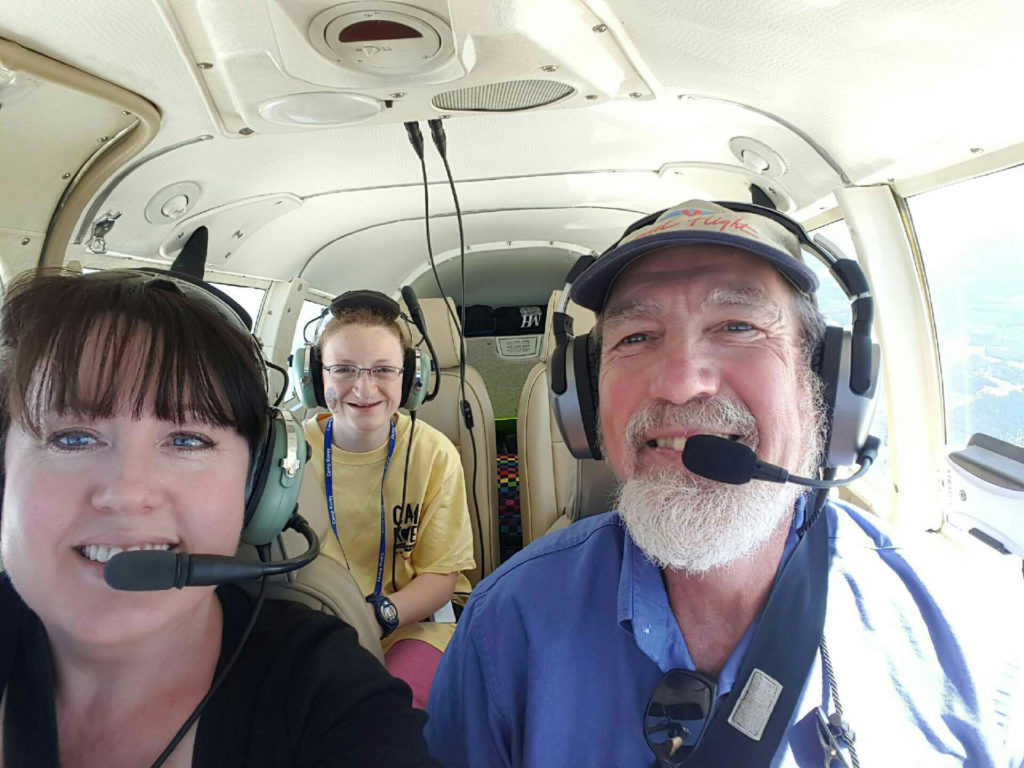
Those stories certainly motivate Sue Wolber, though airplanes never held center stage in her girlhood fantasies. “I was a shy, quiet little mouse as a kid, but always interested in math and science.” That interest eventually led to a degree in computer science and a career as a software engineer. Then a new employee joined her work group. He was a pilot. “He took each of us up for a ride and let us fly a little hands-on. I loved it, and over the next few months I went for a couple more rides, sharing the cost with him. After three or four flights, I was hooked and started taking lessons,” Wolber recalls. That was 1990. Today she owns shares in two planes and has logged more than 4,000 hours flying out of Fort Collins, Colorado.
In 2007, Wolber learned she had breast cancer. “I was incredibly lucky that the cancer was caught early,” she says. “I only had to do surgeries and radiation but no chemo. I had good insurance, a supportive boss at work, wonderful friends and great family. But cancer of any kind really makes you stop and think about how short life is, and what your priorities in life are. It made me aware of the what-ifs – ‘what if’ I hadn’t had all the support and insurance, ‘what if’ the cancer hadn’t been caught early. What about all the people who aren’t as lucky as I was?”
Once the cancer treatment was behind her, she got her flight physical back and bought her dream airplane. “It’s a go-fast Bonanza. And I decided I wanted to use it to give back, to help the people who are having a hard time medically and financially. Just a few questions to fellow pilots made it obvious that Angel Flight was the organization I was looking for.”
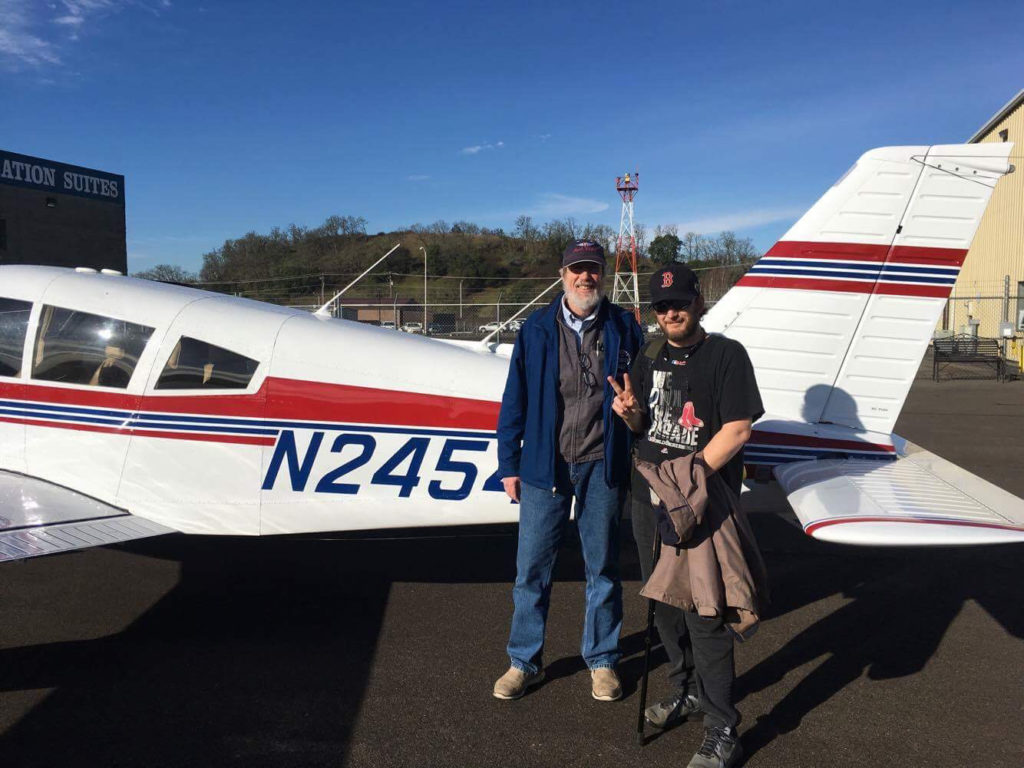
In 2010, she signed up with both Angel Flight West and Angel Flight Central. Many of the missions Wolber flies are for patients with stage four terminal cancer who have tried all the FDA-approved treatments, exhausted their medical insurance, and are traveling to clinical trials.
“All of these missions are incredibly rewarding,” she says. “But the one that touched me the most was a lady who needed a new start in life. Her husband kept beating her up. She’d moved away from her now-adult kids, kept changing jobs and moving around, trying to ‘stay lost,’ but the husband kept finding her and beating her up.
“By the time she was in a shelter hiding from him, she was a scared rabbit. Angel Flight West and the shelters offered her a chance to move somewhere to get a new start. They literally handed her a map of the US and asked, ‘Where have you never been – where do you know no one?’ And she picked a town.
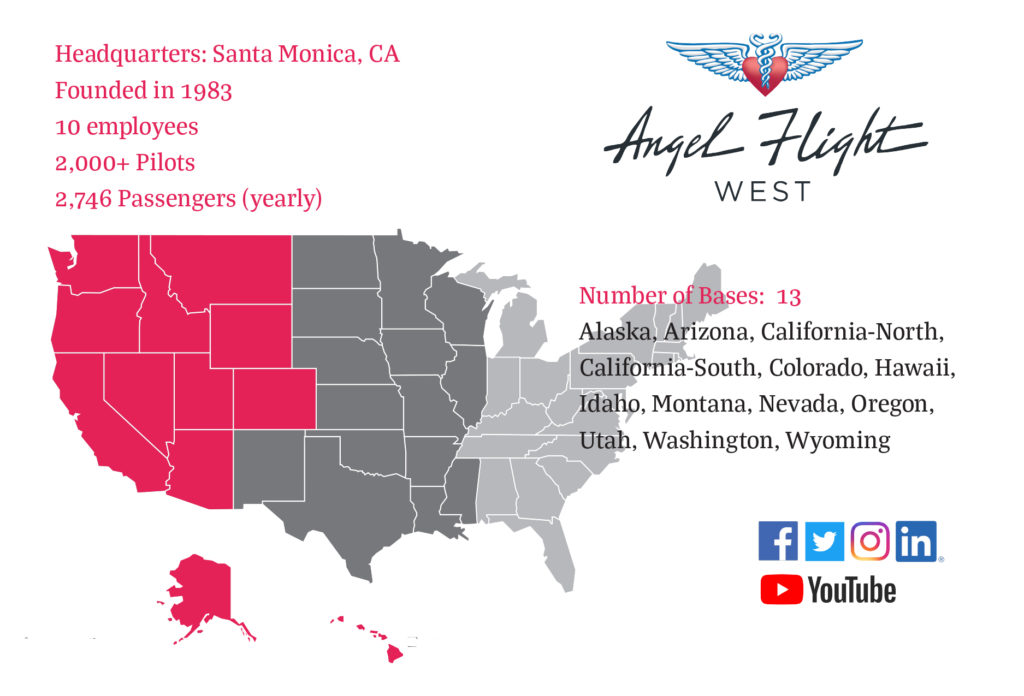
“The shelter in the new town arranged for housing when she arrived. AFW arranged for the transport. I picked her up partway and took her further on her journey to a new life. She had to leave behind her children, her friends, her name, her social security number, her cell phone, her email address, everything that might let her husband find her. And she had to have the courage to go somewhere where she knew no one and completely start over.
“When I picked her up, the first thing I noticed was that she had no teeth, from all the punches. She was scared of her own shadow, terrified the husband would pop up along the way. Partway through the flight, she finally relaxed a little and told me that the shelter at her destination had arranged for her to get dental care for free, to get back the ability to chew.
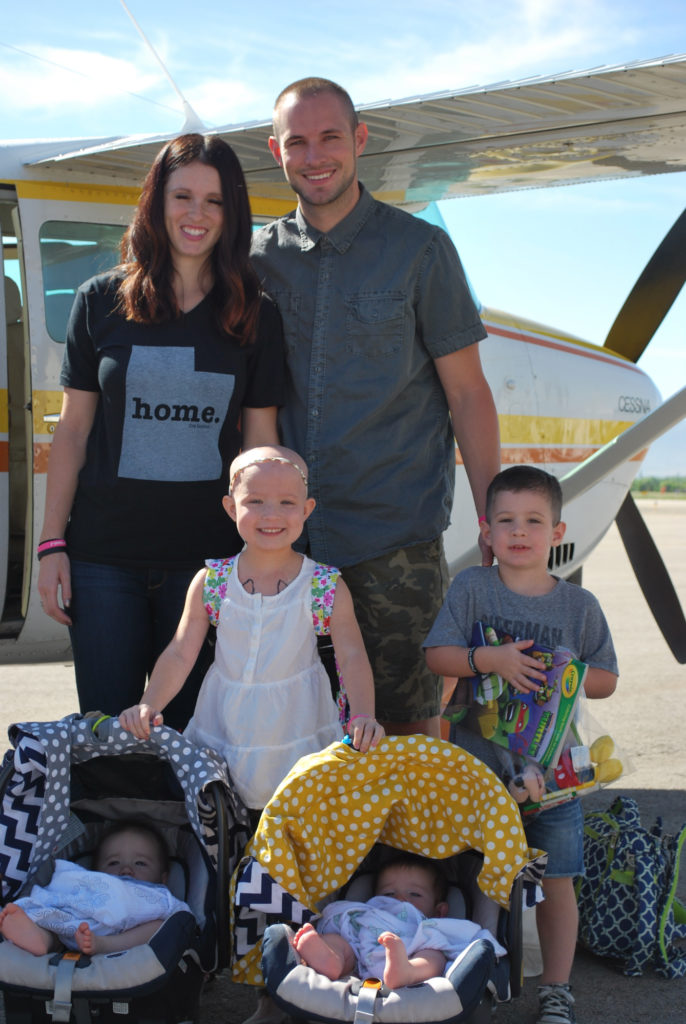
“It’s horrible there are people in the world like her husband, but it’s wonderful there are organizations like shelters and AFW who offer this kind of assistance.”
On the ground, Wolber continues to work as a software engineer, and enjoys hiking, biking, and travel. She volunteers with Young Eagles and Women of Aviation Worldwide (WOAW) and ferries passengers for the Collings Foundation. She also teaches for the Civil Air Patrol –transition training for Skylanes and Bonanzas and mountain flying.
While there is a financial incentive (all flight costs are tax deductible) it is not the reason these pilots volunteer. “My earliest memories are of airplanes, and the magic of flight,” says Jim Origliosso. “I was ‘that kid’ with model airplanes covering the ceiling of my bedroom.”
It wasn’t until Origliosso was in his mid-50s that it came to him that he might have the time and money to realize his dream of being a pilot. He’s been flying for 12 years now and loving every minute of it.
In 2012, he attended Oregon Pilots Association meeting and someone handed him an AFW brochure. He explains, “After I’d gotten my private pilot certificate and instrument training, I was searching for another reason (excuse) to spend substantial amounts of time and money on what is essentially a hobby. Plus, during the learning process, I had scared myself a couple of times and made a promise that if things worked out okay, I would do something good. AFW as a pretty good solution to both of those issues.”
Now, with 99 Angel flights in his logbook, Origliosso says, “It is without a doubt the most fulfilling and rewarding thing that you can do as a pilot. You get to do what you love to do while helping others during what must be most difficult and challenging life situations. It’s very meaningful and hugely appreciated by the people you’re helping.”
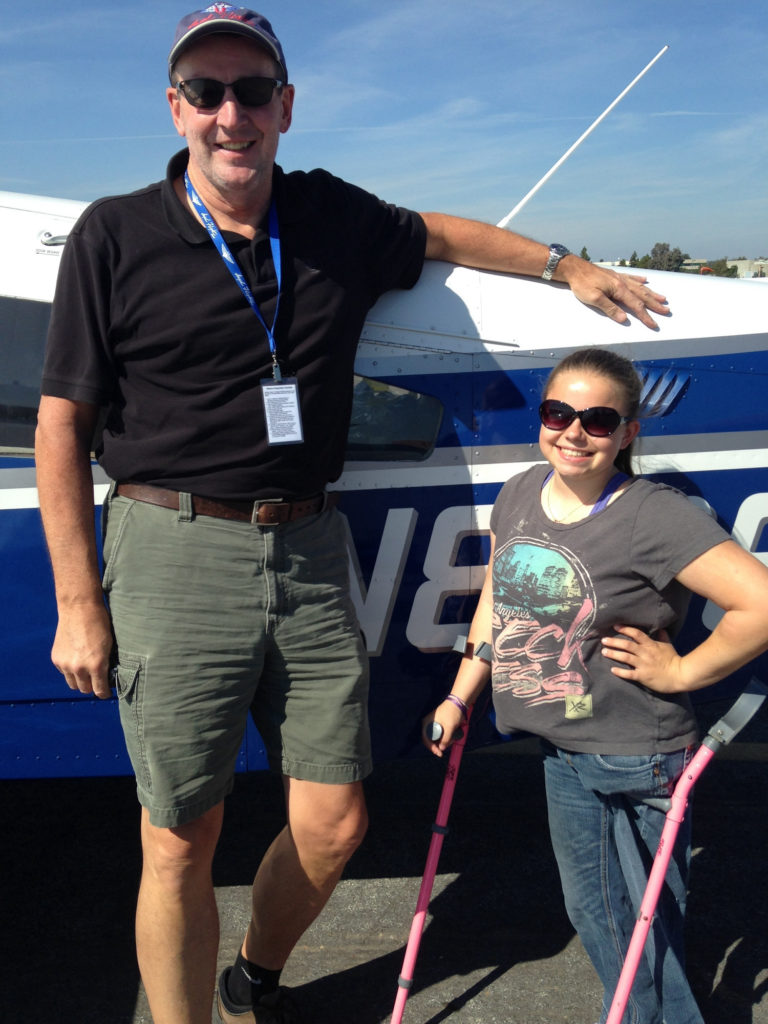
Origliosso flies a Piper Dakota out of Hobby Field in Creswell, OR, and is also AFW’s Oregon Wing Leader, arranging fly-ins for current and prospective volunteers and helping with outreach.
As for memorable missions, he says, “I remember the people more than the situations. If you sit shoulder to shoulder with a person during what is often, for them, a life changing moment while you both are participating in a fairly risky activity, there is a relationship. You respect them for what they are going through and they’re trusting you with their life.”
Origliosso, who was interviewed while at AirVenture 2019, confesses, “If I’m not flying, I’m usually thinking about flying. At the moment, I’m camping next to my airplane at Oshkosh, watching airplanes takeoff and land.”
Angel Flight West has garnered an array of accolades, including induction into the San Diego Air & Space Museum Hall of Fame and receiving a FIERCE Award from the Biden Cancer Initiative for the help they offer to cancer patients. Selected from more than 700 nominees, AFW is one of ten organizations and individuals honored at the 2018 inaugural event in Washington, D.C. “We share those honors with every one of our volunteer pilots,” says Executive Director Olson.
Seven years ago, AFW began handing out awards themselves, establishing the annual Endeavor Awards to celebrate the every-day Joes and Janes who use their time, skills and aircraft to help others. Past awardees include volunteer pilots who fly for Lifeline Pilots, LightHawk, Orbis International, Patient Airlift Service (PALS), Pilots N Paws, Remote Area Medical, Veterans Airlift Command, Wings Flights of Hope, and several Angel Flight organizations (Mid-Atlantic, Southeast, and West). The event also recognizes those who inspire aviation aficionados everywhere including Bill Ayer, Dale Klapmeier, Clay Lacy, Sully Sullenberger, and Sean Tucker.
Accepting his award, Sullenberger remarked, “You know, not everyone gets the recognition for what they do. We have people doing a lot of important things, selfless things, all the time. They just haven’t been as publicly noticed as we were.”
Ready to sign up? Pilots in the Western states can visit the Angel Flight West website (www.angelflightwest.org). AFW also welcomes Earth Angels, volunteer drivers who ferry passengers to and from the airports. Pilots in other parts of the country can find a volunteer pilot organization through Air Charity Network (aircharitynetwork.org/about-us/).













